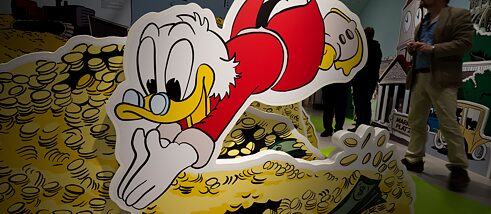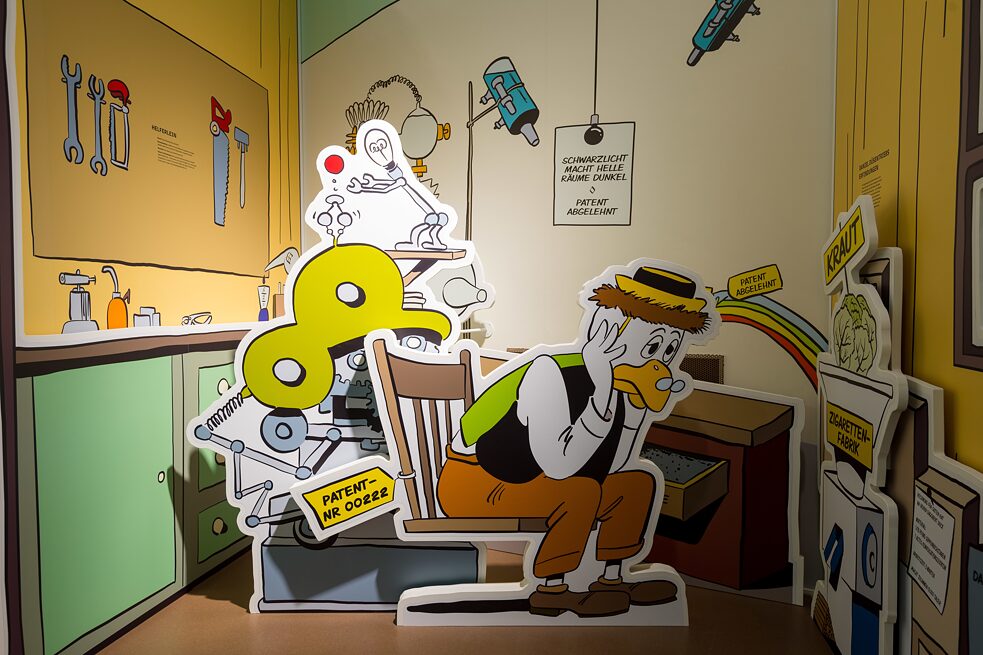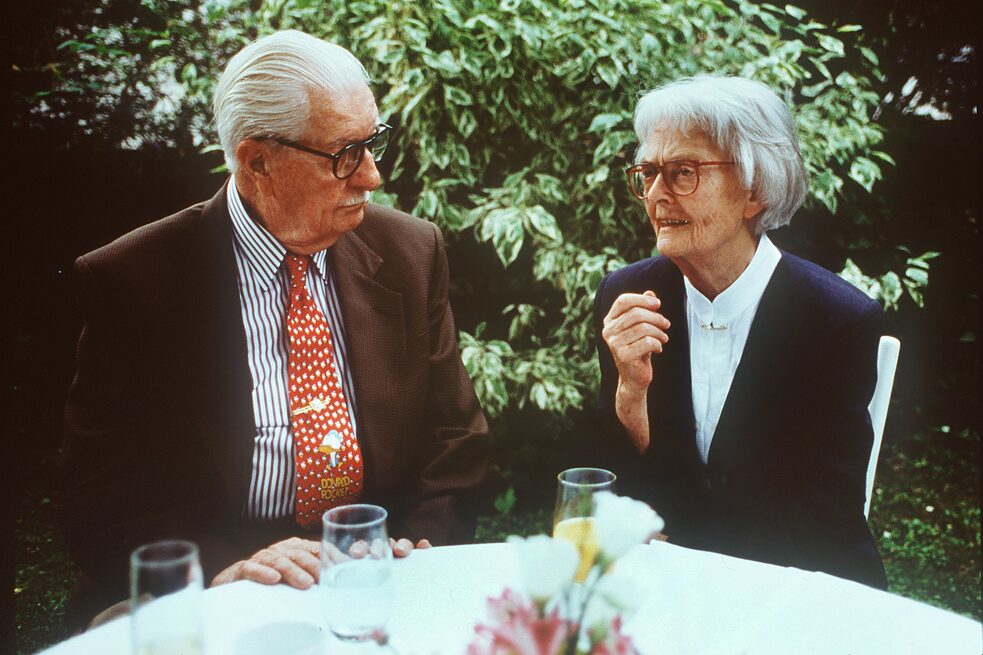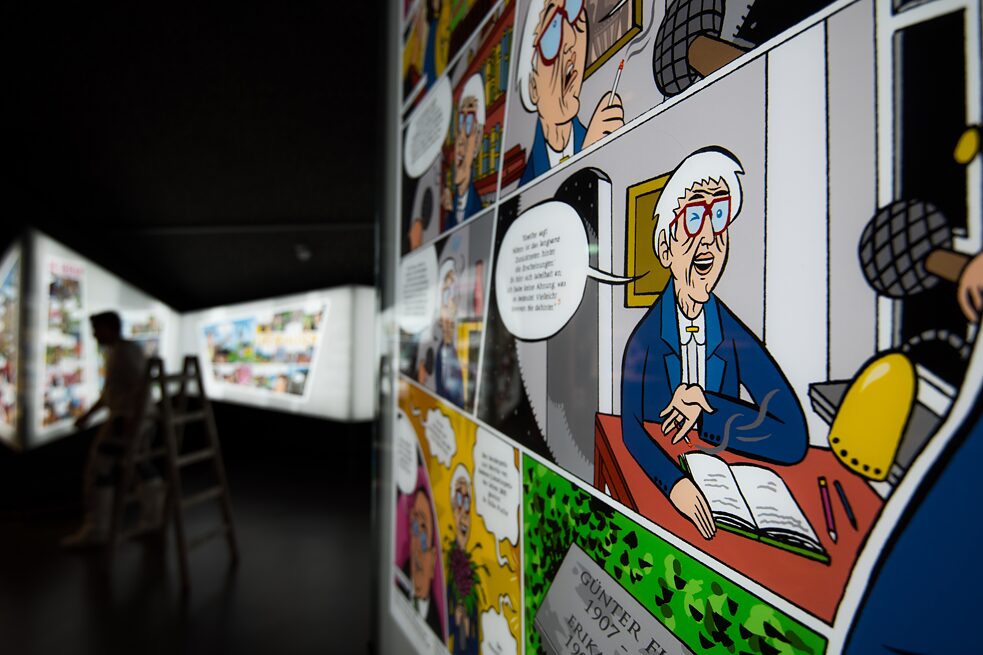Museum for Comics and the Language Arts
Duckburg on the banks of the Saale

Since 2015, the Museum of Comics and the Language Arts in Schwarzenbach has explored all aspects of the art of the comic. It pays tribute in particular to long-standing German translator of the Mickey Mouse comic books, Erika Fuchs.
“Welcome to Duckburg!” the Museum for Comic and Language Arts in Schwarzenbach an der Saale enthuses on its website. And it fully lives up to this slogan. In around 600 square metres, the museum’s permanent exhibit offers a tour that explores the general history of the comic and invites visitors to dive into the world of Micky Mouse. Visitors can walk through Duckburg, looking over Gyro Gearloose’s shoulder in his workshop and taking a dip in Scrooge McDuck’s pool of gold coins inside his giant safe. In filmed interviews, comic experts talk about scientific research into Duckburg.
 Children can walk through Duckburg and look over Gyro Gearloose’s shoulder in his workshop, take a dip in Scrooge McDuck’s pool of gold coins and climb through the Jog Tunnel behind Grandma Duck’s barn.
| Photo: © picture alliance / Nicolas Armer / dpa
Children can walk through Duckburg and look over Gyro Gearloose’s shoulder in his workshop, take a dip in Scrooge McDuck’s pool of gold coins and climb through the Jog Tunnel behind Grandma Duck’s barn.
| Photo: © picture alliance / Nicolas Armer / dpa
“Moan! Groan! Sigh!”
The museum is dedicated to Erika Fuchs, who became editor-in-chief of the newly founded German Mickey Mouse magazine in 1951 and translated the tales from Duckburg until 1988. Fuchs spent a large part of her life in Schwarzenbach, where the art historian, who died in Munich in 2005 at the age of 98, is also buried. The museum tells the story of her life as a biographical comic. A large section is dedicated to her skilled use of language, and interactive stations invite visitors to playfully explore language and rhetorical devices like onomatopoeia and alliteration. One of Fuchs’ innovations was the use of the inflective in the German comic world, also often referred to as the “Erikativ” today in her honour. Instead of using infinitives of verbs to express action, she often shortened them to their stem, using “ächz” and “stöhn” instead of “ächzen” and “stöhnen” (“groan” and “sigh”). The museum also notes how Fuchs gave each duck its own linguistic style: “You might even say that Erika Fuchs taught Donald to quack.”
 Erika Fuchs, first editor-in-chief of the German Micky Mouse Magazine, talking to Carl Barks, the creator of Donald Duck, in Munich in 1994.
| Photo (detail): © picture alliance / dpa / DB Egmont Ehapa Verlag
Erika Fuchs, first editor-in-chief of the German Micky Mouse Magazine, talking to Carl Barks, the creator of Donald Duck, in Munich in 1994.
| Photo (detail): © picture alliance / dpa / DB Egmont Ehapa Verlag
The world doesn’t end at Duckburg
The museum also features special exhibitions that explore current developments in the comic sector. The museum has regularly featured the winners of the Max and Moritz Prize, awarded every two years to the best German-language comic artists. At the beginning of 2020, Animate Europe showed the best comics from the competition of the same name, which invited comic artists to submit their ideas about Europe. Other exhibitions are dedicated to individual artists or works, such as the autobiographical book Drei Steine (Three Stones) by Nils Oskamp in 2018, who was a victim of right-wing extremist violence in the 1980s and worked through his experience in comics.
 The museum depicts the story of Erika Fuchs’ life in comic form.
| Photo (detail): © picture alliance / Nicolas Armer / dpa
The museum depicts the story of Erika Fuchs’ life in comic form.
| Photo (detail): © picture alliance / Nicolas Armer / dpa